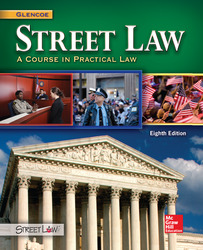
Street Law: A Course in Practical LawChapter 43: DiscriminationChapter OverviewsWhat Is Discrimination? Our legal traditions are rooted in part in a commitment to equality. Discrimination—treating some people differently because of their membership in a group—conflicts with this goal of equality. Not all types of discrimination are unfair or illegal, however. The process of making laws often requires separating people into categories. As long as these classifications are found by the courts to be reasonable, they are usually legal. Rulings by the U.S. Supreme Court generally establish the minimum protections against discrimination that the U.S. Constitution requires. State constitutions, state laws, and local laws may extend greater protection against discrimination, as long as these protections do not infringe on other constitutional rights. Discrimination Based on Race, National Origin, and Citizenship Most laws and government policies that discriminate based on race or national origin are unconstitutional unless they serve an important goal for society. For example, the U.S. Supreme Court has held that diversity is important enough in higher education to permit schools to show some preferences for minorities when evaluating applicants—a policy known as affirmative action. In some cases, discrimination regarding a person's citizenship status is acceptable (noncitizens are prohibited from voting), but in other situations it is unconstitutional (noncitizens cannot be prevented from becoming lawyers). Discrimination Based on Gender and Sexual Orientation Courts generally will not uphold legislation or government action that favors one gender over another unless there is a good reason. Gay, lesbian, bisexual, and transgender persons usually do not enjoy the same legal protections as racial and ethnic minorities. While some state and local laws protect against discrimination based on sexual orientation, federal law does not include this protection. The U.S. Supreme Court has used its earlier privacy precedents, however, to extend legal protection to same-sex adults involved in consensual relationships. Discrimination Based on Age and Disability In general, discrimination based on age is permitted. Driving, voting, and other activities are prohibited until a person reaches a certain age. One reason this form of discrimination is allowed is that people outgrow their youth and these legal limitations. A federal law does protect against age discrimination in employment for most persons over the age of 40. The 1990 Americans with Disabilities Act(ADA) has helped to protect the rights of people with disabilities, in particular by requiring greater accommodations for people's disabilities. Housing Discrimination Federal laws prevent certain forms of discrimination in housing. Landlords may not discriminate against potential tenants on the basis of race, color, religion, gender, national origin, or disability. |  |















